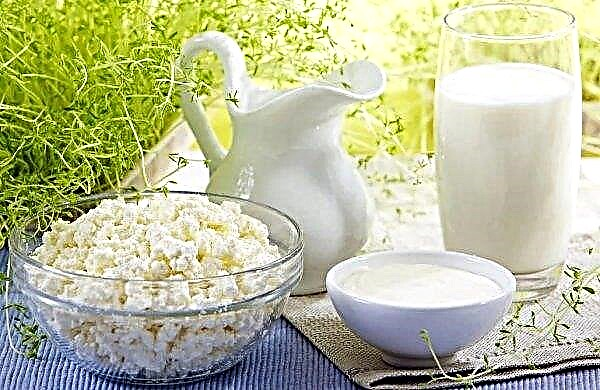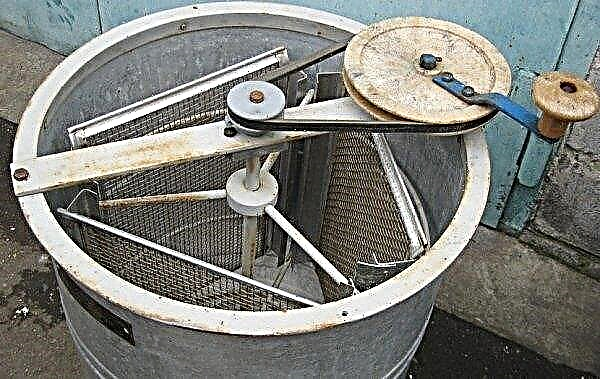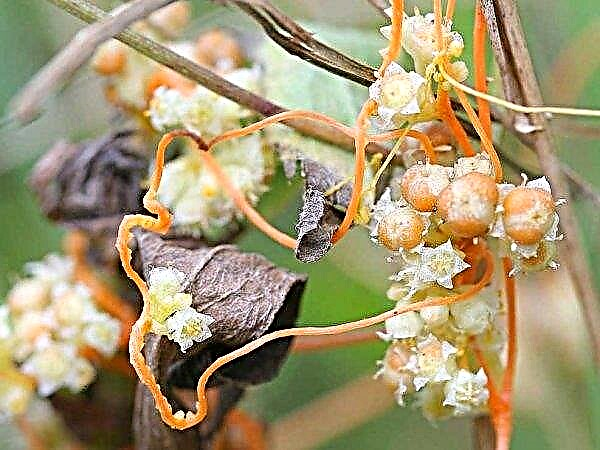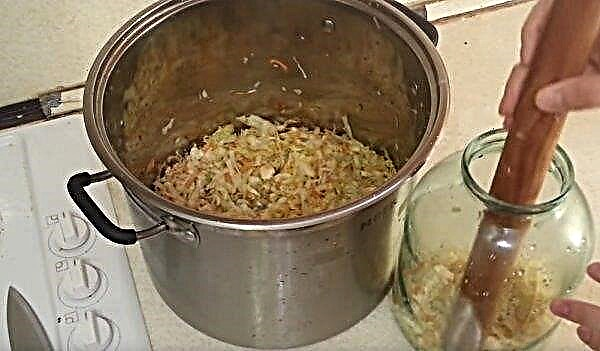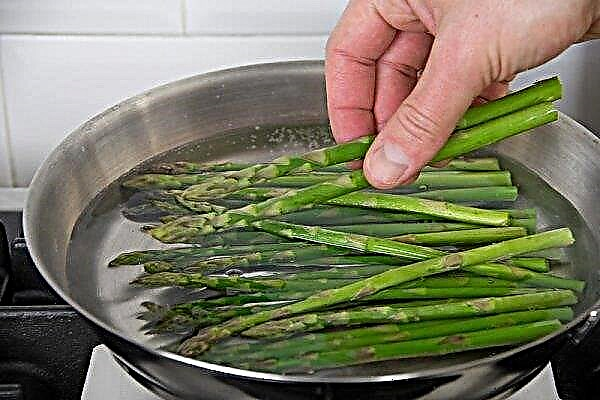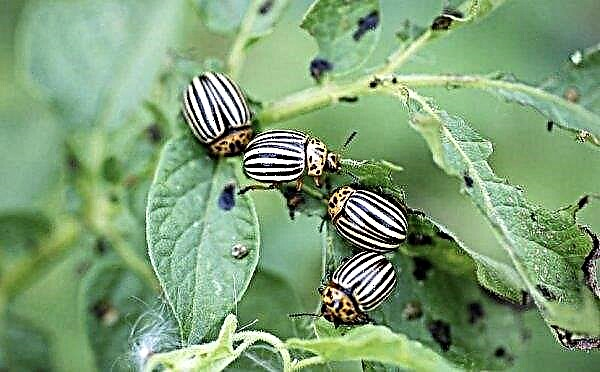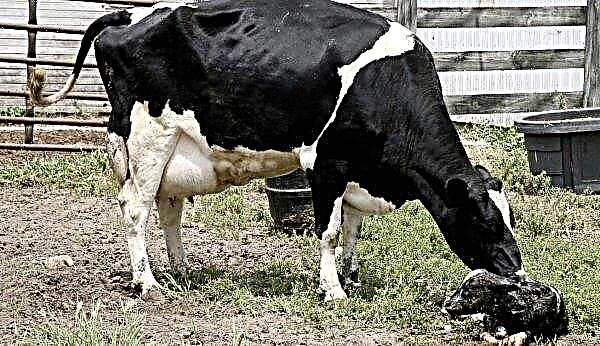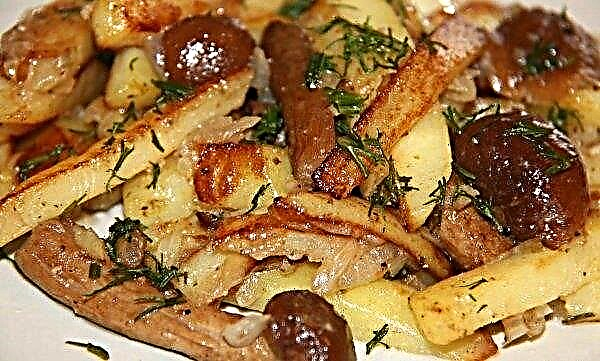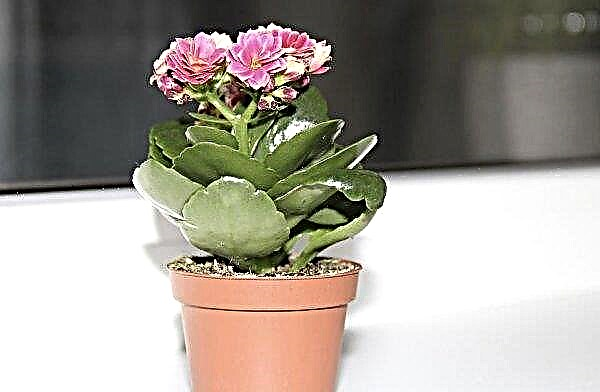Quince is popular in the countries of the East and the Mediterranean, but in Russia it is an unusual fruit. There are two types of plants grown for the sake of fruits - common quince and Japanese quince. The latter belongs to the genome Henomeles of the family Pink. Japanese quince shrub looks very beautiful and is often grown only for decorative purposes, although its small and somewhat stiff fruits are beneficial, and they can be used in cooking, home cosmetics and traditional medicine.
The chemical composition of the fruit
The nutritional value of this product is represented by the following composition:
| Calorie content | 48 kcal / 100 g |
| Squirrels | 0.6 g |
| Fats | 0.5 g |
| Carbohydrates | 6 g |
| Alimentary fiber | 3.6 g |
| Water | 84 g |
Japanese quince contains a lot of vitamin C, as well as vitamins: B1, B2, E, PP and beta-carotene. The mineral composition is represented by Ca, K, Mg, Na, P and Fe.

Organic acids are represented by:
- apple
- lemon;
- chlorogenic;
- wine;
- fumaric.
The composition contains tannins, pectins, catechins, anthocyanins, tanides, quercetin.
Did you know? In 100 g of henomeles there are two daily doses of “ascorbic acid” - 182 mg. So it is not for nothing that this plant is also called the "northern lemon."
What is useful Japanese quince
The fruits of the described culture have anti-inflammatory, immunomodulatory and diuretic manifestations. They will be useful to different categories of the population.
- Preparations from Japanese genomeles have the following effects on the human body:
- improve appetite and stimulate digestion;
- stopping inflammatory processes;
- help with diarrhea;
- useful for respiratory diseases, including pneumonia and tuberculosis;
- relieve the condition with joint diseases;
- strengthens blood vessels and beneficially affects the work of the cardiovascular system;
- remove harmful cholesterol;
- stabilize the immune system and increase stress resistance.

Useful properties for women
Consumption of Japanese quince fruits has a good effect on appearance, as their flesh contains antioxidants. In addition, this plant can be used to make homemade cosmetics. The ability of these fruits to stimulate metabolism helps maintain a slim figure. To do this, they make tea. Genomeles also helps restore the body after childbirth.
- Japanese quince will be a useful herbal product for pregnant women:
- help cope with nausea in the first trimester;
- will strengthen the immunity of the expectant mother;
- contains iron, the need for which increases, as a result of which pregnant women often have anemia;
- serves as a prevention of varicose veins;
- help cope with edema.
Important! Pregnant and lactating women should not abuse these fruits. They can cause constipation not only in the mother, but also in the baby (through breast milk), which will provoke colic in the baby.
For men
The use of Japanese quince will help men increase or restore potencywill increase the likelihood of conceiving a baby. Antioxidants will prolong youth and improve well-being, help withstand stress from physical exertion and under the influence of adverse environmental conditions.
The use of quince is a prophylactic against inflammation of the prostate and urinary system, prostate cancer. For men, the ability of plant materials to regulate blood pressure and excrete cholesterol will not be superfluous.
 Smokers will benefit from the beneficial effect of quince on the respiratory system.
Smokers will benefit from the beneficial effect of quince on the respiratory system.
For children
The fruits of Japanese genomeles will help strengthen the children's body. They will increase the immunity of the child's body, and will serve as the prevention of anemia. Children may not like their tart sour taste. Usually, the pulp is first given in the form of mashed baked fruits along with another vegetable or fruit at the age of not earlier than a year.
They start with a portion of only 5 g. Mothers should observe the baby’s reactions to the new product, as there may be an allergy to it. If everything is in order, then the daily norm can be increased to 50 g. Vitamin puree should not be given every day. It is enough 1-2 times in 7 days. From the age of 1.5 years, you can try to introduce raw fruits into the diet.
The use of Japanese quince
The above representative flora can be used in various fields of life. Fruits, leaves and seeds are used in home cosmetology and traditional medicine. Genomeles is no less popular in culinary art. Quince can be stored in a raw state for a long time, but usually they make preparations or dry them.
In cosmetology
Home-made cosmetics based on Japanese quince have a calming effect on irritated skin, rejuvenating it. The drugs help with some problems: pigmentation, excessive fat, enlarged pores, rashes. A decoction of the leaves can be used as an aftershave. As raw materials, not only fruits are used, but also leaves, seeds of the plant.

For face
For facial skin, it is good to use the pulp of ripened fruits. Of these, you can make the following care products:
- Tonic for oily and problem skin, with freckles and pigmentation. Mix 1 tbsp. l chopped quince with 1 teaspo of glycerin and dilute the mixture with 1 cup boiling water. Allow the substance to cool. Wipe the face with a solution in the morning and evening.
- Mask for oily skin. Grate quince fruit on a fine grater and beat one chicken egg with protein. Apply to the face, bypassing the eyelids and lips, for 15 minutes, and then rinse with warm water.
- Anti wrinkle mask. Grate the chopped chenomeles fruit with one egg yolk. Keep on your face for a quarter of an hour.
- Mask for aging skin. Take a yolk and one teaspoon of quince juice, honey and cold pressed olive oil. Beat everything well and apply on face for 15–20 minutes. Then rinse with warm water.
During pigmentation, it will be good to wipe the face daily with freshly squeezed genomeles juice several times a day. Even if you just lightly wipe your face with a piece of this fruit, it will refresh and cleanse the skin. An infusion of seeds will help get rid of oily sheen. If you slightly rub the eyelids with a slice, then this will remove the swelling around the eyes.
Did you know? The ancient Greeks considered quince a favorite fruit of Aphrodite. In Mediterranean countries, this plant is considered a symbol of love.
For hair
The following remedies will be useful for the hairline:
- Infusion of leaves. It will help with dandruff. Pour 1 liter of boiling water 100 g of dried foliage of genomeles and let it brew for 1 hour. After cooling and filtering, rinse the hair with the resulting composition. This procedure should be done 3 times a week.
- A decoction of seeds. Reduces oily scalp and hair. To do this, pour 1 tbsp. henomeles seeds with water (0.2 l) and simmer in a water bath. Allow to cool and strain. Rub the resulting product into the scalp, accompanying this process with a light massage. Then put a plastic bag on top and wrap a towel. Keep an hour on the hair and then rinse.

In cooking
Thanks to their pleasant acidity, useful properties and extraordinary aroma, the fruits of the genomeles are widely used in cooking. In raw form, they are not particularly used in food due to astringency. Small pieces are added to hot tea instead of lemon or to compotes in combination with sweet fruits. The ripened fruits are dried, dried, boiled, baked, stewed, pickled.
Quince is used for the preparation of first and second courses, desserts. From Japanese quince you can make soft drinks (jelly, stewed fruit), a filling for pies. Its unusual taste is used when baking meat dishes, and also - make tinctures. In Japan, Carinshu liquor is prepared from these fruits.
To preserve useful substances, plant materials are ground with sugar or honey, and stored in the refrigerator. The resulting syrup can be added to tea to give a lemon flavor. Fragrant quince is used in winter blanks. Fruit drinks are brewed from fresh or dried fruit. Quince yields delicious jam (2 kg of sugar is taken per 1 kg of fruit), jelly, candied fruit, marmalade, and pastille.
Video: 5 delicious quince dishes for breakfast, lunch and dinner
In folk medicine
Healers for the preparation of medicinal potions use not only fruits, but also foliage, seeds. Consider the most popular recipes. The fruits are picked from the branches in a state of absolute ripeness, but before the onset of frost. During their processing, seeds are extracted from them and dried. The leaves are harvested and dried in June - July.
Tinctures
Alcohol infusion of quince leaves normalizes the condition with hypertension.
It is prepared and used as follows:
- Crushed freshly torn foliage in an amount of 100 g is placed in a glass jar and poured with 1 glass of vodka.
- The container is moved to a dark place, and kept for a week to insist.
- After the specified time, the liquid is filtered.
- The resulting infusion is drunk 20 drops in the morning and evening.
Important! In order not to harm the henomeles bush, not more than 30% of the foliage is torn from it during harvesting.
Decoctions
A decoction of leaves helps to cope with bronchial asthma, inflammatory processes of the gastrointestinal tract.
It is prepared like this:
- 5 g of leaves are boiled with boiled water (250 ml) and simmered in a water bath for 15-17 minutes.
- Then the mixture is cooled for 35-40 minutes and filtered.
- Drink a decoction of 2 tbsp. 3-4 times a day before meals.
 A decoction of quince fruits has a beneficial effect on the circulatory system, increases hemoglobin, strengthens the immune system, helps against colds, acute respiratory infections and flu.
A decoction of quince fruits has a beneficial effect on the circulatory system, increases hemoglobin, strengthens the immune system, helps against colds, acute respiratory infections and flu.
It can be easily prepared at home:
- One tablespoon of chopped fruit is poured with boiling water (one glass). Stew the mixture on low heat for 10-12 minutes.
- Remove from the stove and leave for 25-30 minutes, tightly closing the lid.
- Filter through a strainer and drink 1 tbsp. 3 times a day before meals.
 A decoction from the seeds of this plant crop has an enveloping and anti-inflammatory effect, therefore it is indicated for problems with the gastrointestinal tract, bronchitis and colds.
A decoction from the seeds of this plant crop has an enveloping and anti-inflammatory effect, therefore it is indicated for problems with the gastrointestinal tract, bronchitis and colds.
It is prepared and used as follows:
- Stir 10 g of raw materials in a glass of warm water for 8-10 minutes.
- Filter through a piece of gauze.
- The resulting "mucous" liquid is drunk 1 tbsp. after eating 3-4 times a day.
Important! Seeds must not be crushed before use, as the harmful components contained in them will get into the drink and may lead to poisoning.
Contraindications and possible harm
- Despite the fact that quince is a natural and very useful product, there are certain contraindications for its use:
- allergy;
- tendency to constipation;
- pleurisy;
- gastrointestinal tract diseases (inflammation of the mucosa).
It is worth noting that you can not use the seeds unsystematically, since they in their composition contain harmful ingredients to humans. It is also necessary to refrain from consuming raw quince, since the substances contained in it irritate the organs of the gastrointestinal tract.

This can trigger an exacerbation of gastritis, pathologies of the pancreas, peptic ulcer or urolithiasis. This product can be especially harmful with enterocolitis, since it increases the risk of intestinal obstruction.
There is another negative point in the use of this fetus - it has a bad effect on the vocal cords and larynx, causing soreness. Therefore, singers, broadcasters, teachers should not include it in their diet. Japanese quince treatment should be treated as adjuvant therapy, and if you have health problems, consult a doctor.
Did you know? Not everyone knows that henomeles can be grown as a home plant. From it you can form a bonsai. And with proper care, such a bush will live up to 80 years.
Japanese quince is not only an adornment of a garden plot. Its fruits can be used in cooking, the manufacture of home cosmetics, for the treatment of certain diseases. You should not forget to extract seeds and consume a plant product with caution, since the fruits can provoke constipation, and also have a number of contraindications.

